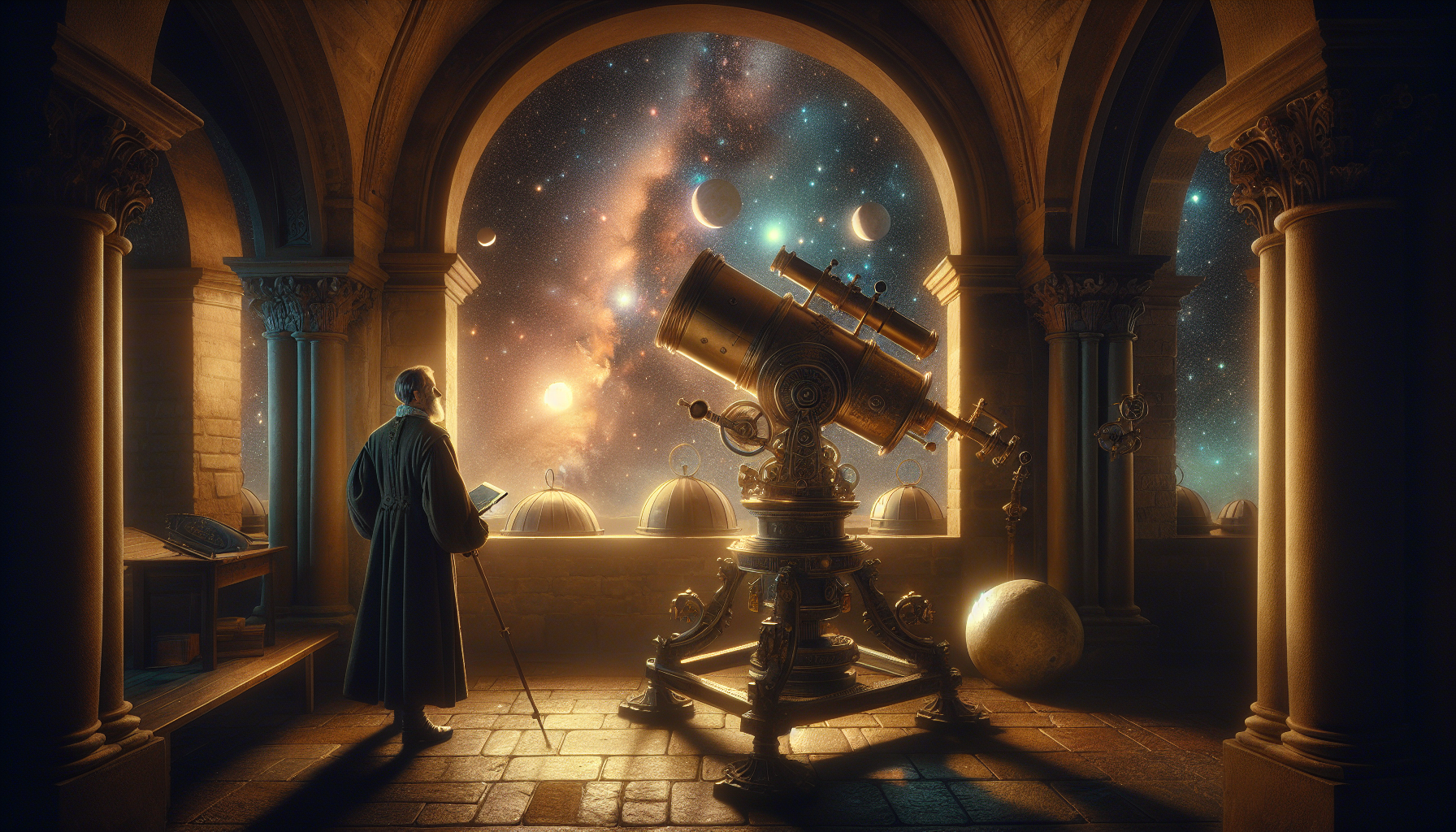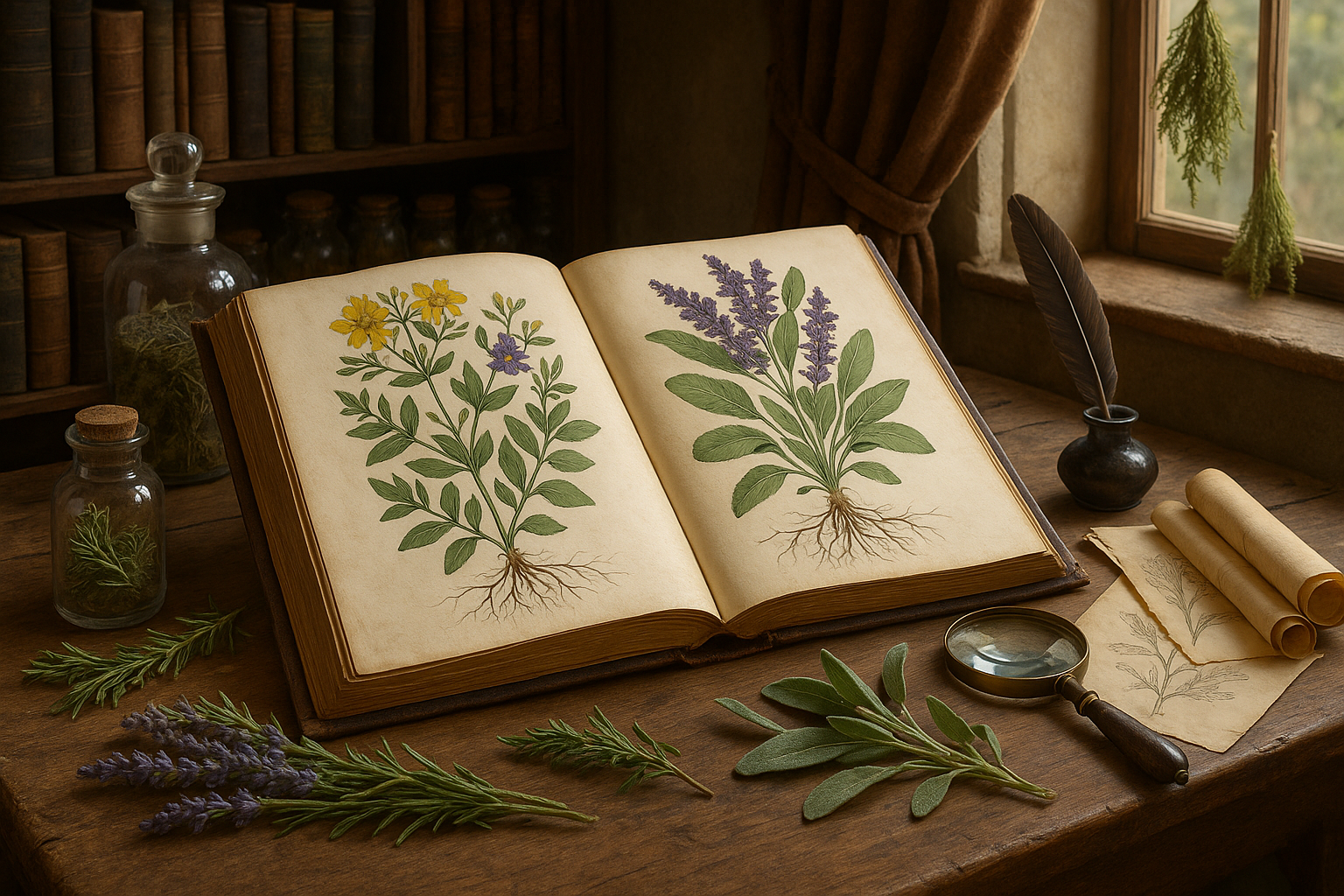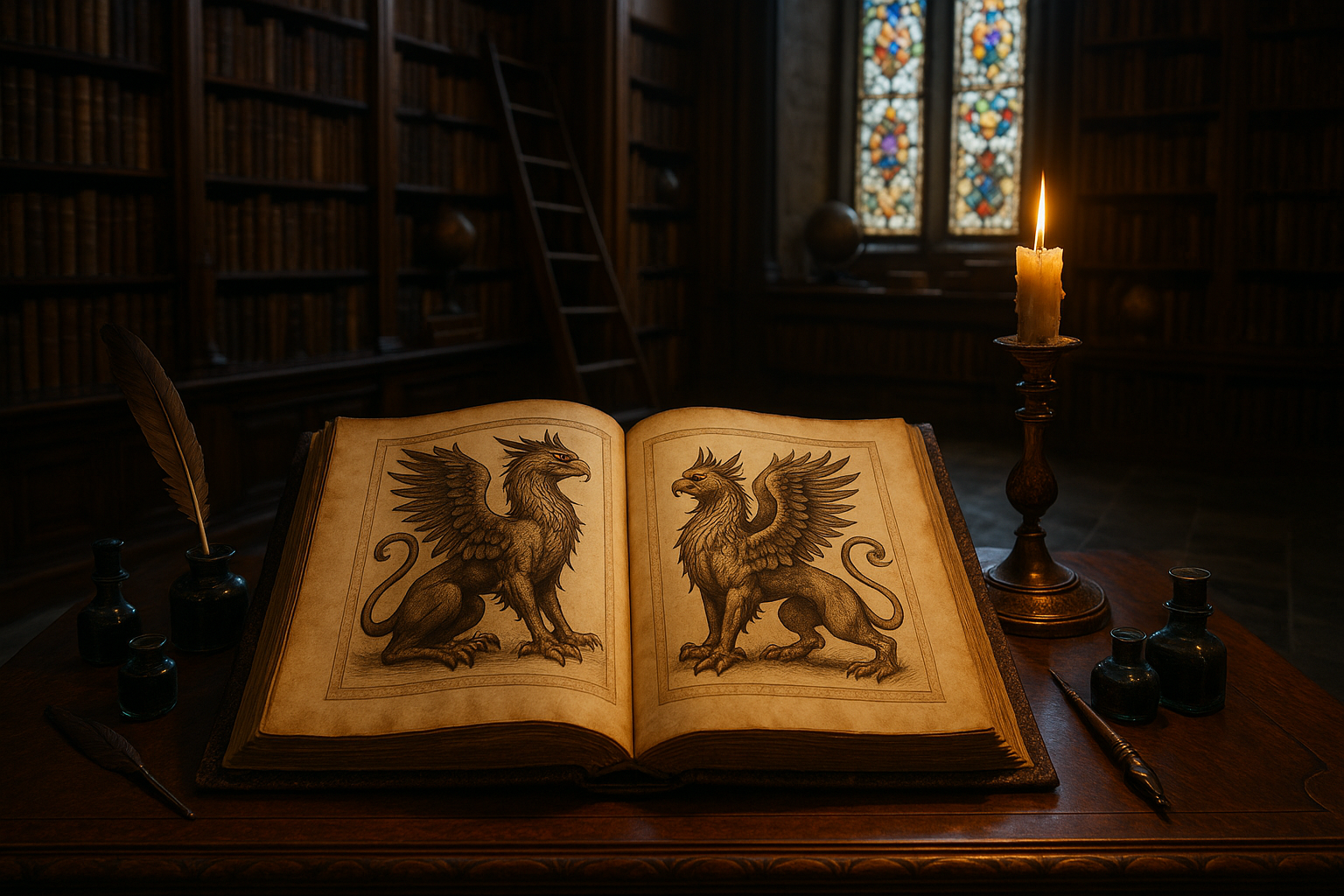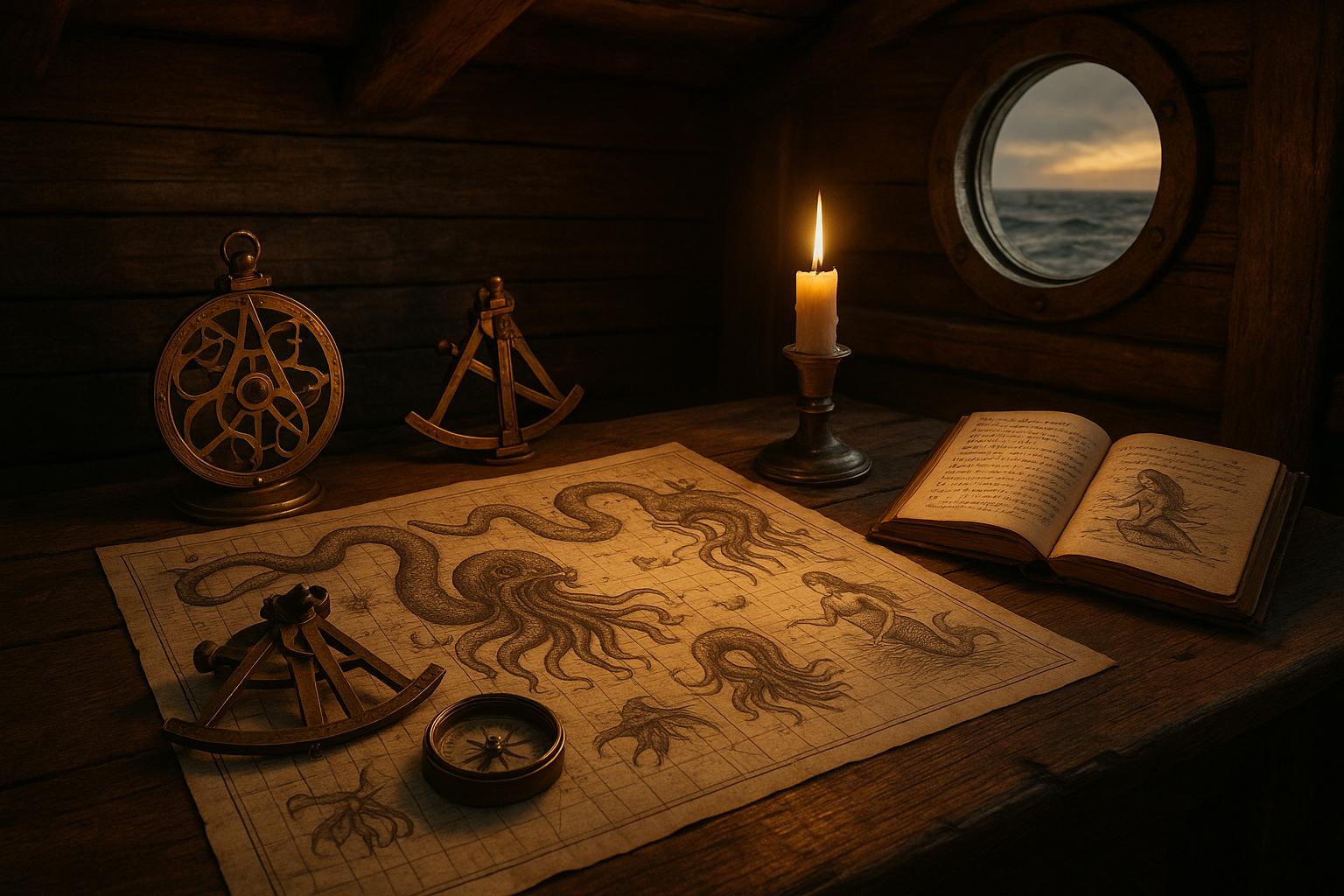In the grand tapestry of scientific discovery, few figures have painted with as vibrant and lasting strokes as Galileo Galilei. Standing at the intersection of art and science, his legacy is not only etched in the annals of astronomy but also vividly illustrated through his pioneering visual representations of the heavens. Imagine peering through a rudimentary telescope, crafted with the knowledge and materials of the 17th century, and seeing for the first time the rugged, cratered surface of the Moon or the startlingly clear presence of Jupiter’s moons. These were not just astronomical breakthroughs; they were revelations that reshaped humanity’s understanding of its place in the cosmos and challenged the very foundations of celestial study. Today, we embark on a journey through “Galileo’s Celestial Canvas,” exploring how his innovative approach to visualizing the sky has left an indelible mark on both science and art, inspiring generations of astronomers, artists, and dreamers alike. 🌌
Galileo’s ingenious use of the telescope was transformative, capturing the beauty of the sky with unprecedented clarity and precision. His detailed sketches and observations not only provided tangible evidence to support the heliocentric model of the universe but also elevated the role of visual documentation in scientific inquiry. This article delves into the intricate relationship between Galileo’s observations and his artistic representations, exploring how they collectively contributed to a paradigm shift in the way the universe was perceived. From his meticulous drawings of lunar phases to his systematic recordings of celestial movements, each representation was a testament to the power of observation and the art of depicting reality. We will explore how these images, while grounded in scientific endeavor, also evoke a sense of wonder and curiosity, reminding us of the inherent beauty found in the exploration of the unknown.
As we unfold the layers of Galileo’s contributions, this article will guide you through the broader implications of his work on subsequent scientific thought and visual culture. We will examine how his legacy paved the way for future astronomers to not only observe but also artistically interpret the cosmos, bridging the gap between empirical science and imaginative artistry. Moreover, we will consider the impact of these visual representations on public perception and the ways in which they continue to inspire contemporary dialogue about space exploration and visual communication. Whether you’re a seasoned astronomer, an aspiring artist, or simply a curious soul, “Galileo’s Celestial Canvas” invites you to explore the profound beauty and significance of seeing the universe through both a scientific lens and an artistic eye. ✨
The Legacy of Galileo Galilei in Astronomy
Galileo Galilei, often hailed as the father of modern observational astronomy, was pivotal in transforming our understanding of the cosmos. His meticulous observations and innovative use of the telescope opened new avenues for exploration, forever changing our perspective of the universe. Galileo’s contributions are not just a testament to his genius, but also a reflection of the broader shifts in scientific thinking during his time.
In the early 17th century, the prevalent model of the universe was the geocentric model, which placed Earth at the center of all celestial motion. This Aristotelian and Ptolemaic view had been widely accepted for centuries. However, Galileo’s observations, such as the phases of Venus and the moons of Jupiter, provided compelling evidence for the heliocentric model proposed by Copernicus, which posited the Sun as the center of the solar system. These discoveries were not just scientific breakthroughs; they also sparked intense debates and challenged the philosophical and theological understandings of the era.
Galileo’s work extended beyond just celestial observations. He developed the law of inertia, a fundamental concept in physics, and his studies on the motion of bodies laid groundwork for classical mechanics. Galileo’s insistence on empirical evidence and his methodical approach to scientific inquiry were revolutionary, setting the stage for the scientific revolution. His ability to convey complex ideas in clear, accessible language allowed his findings to reach a broader audience, further solidifying his legacy.
The Telescope: A Revolutionary Tool
The invention of the telescope was a monumental leap forward in the field of astronomy. Although Galileo did not invent the telescope, he was among the first to use it effectively for astronomical purposes. The enhanced vision it provided allowed Galileo to observe the heavens in unprecedented detail, leading to discoveries that would forever alter the field of astronomy.
By refining the telescope’s design, Galileo was able to magnify objects up to twenty times their original size. This significant improvement allowed him to make a series of groundbreaking discoveries, including the observation of craters and mountains on the Moon, sunspots, and the four largest moons of Jupiter—Io, Europa, Ganymede, and Callisto. These moons, collectively known as the Galilean moons, provided direct evidence against the geocentric model, showcasing a system where celestial bodies orbited a planet other than Earth.
| Feature | Geocentric Model | Heliocentric Model |
|---|---|---|
| Central Body | Earth | Sun |
| Planetary Orbits | Circular, with complex epicycles | Elliptical |
| Main Proponent | Ptolemy | Copernicus |
| Key Supporting Evidence | Naked-eye observations | Telescopic observations (e.g., phases of Venus, Galilean moons) |
Galileo’s Impact on Art and Culture
Galileo’s work did not only influence the scientific community but also had a profound impact on art and culture. His observations of the heavens inspired a new wave of artistic expression, as the beauty and complexity of the cosmos captured the imaginations of artists and thinkers alike. The shift from a geocentric to a heliocentric view of the universe also mirrored changes in how humans perceived their place in the world, leading to broader philosophical and cultural shifts.
During the Renaissance, art and science were closely intertwined. Galileo himself was an accomplished draftsman, and his detailed sketches of the Moon’s surface and sunspots are considered works of art in their own right. These visual representations not only served scientific purposes but also provided the public with a tangible glimpse of the heavens, making the celestial bodies more relatable and real.
Artists began incorporating astronomical themes into their works, using them to explore concepts of infinity, the divine, and humanity’s place in the cosmos. The interplay between light and shadow in Galileo’s lunar sketches, for instance, influenced the chiaroscuro technique in painting, highlighting contrasts between light and dark. This technique became a hallmark of Baroque art, exemplified by artists such as Caravaggio and Rembrandt.
Moreover, Galileo’s findings inspired literary works that grappled with the implications of a heliocentric universe. Writers and philosophers used the metaphor of the celestial spheres to explore themes of knowledge, discovery, and the human condition. This cultural exchange between science and art enriched both fields, demonstrating the profound interconnectedness of all human endeavors.
Visual Representation in Modern Astronomy
Today, the legacy of Galileo’s visual representations continues to inspire modern astronomy. With advancements in technology, astronomers are able to capture stunning images of the universe that provide invaluable insights into its structure and composition. These images not only serve scientific purposes but also captivate the public, fostering a sense of wonder and curiosity about the cosmos.
Modern telescopes and space observatories, such as the Hubble Space Telescope, have taken celestial imaging to new heights. These instruments provide high-resolution images of distant galaxies, nebulae, and other astronomical phenomena, allowing scientists to study the universe in unprecedented detail. These images also play a crucial role in communicating complex scientific concepts to the public, making astronomy more accessible and engaging.
For a deeper dive into the beauty of astronomical imagery, check out this video from the “Hubble Space Telescope” YouTube channel: [The Most Important Image Ever Taken](https://www.youtube.com/watch?v=oAVjF_7ensg).
The Future of Celestial Exploration
As technology continues to evolve, so too does our capacity to explore and understand the universe. Galileo’s pioneering work laid the foundation for centuries of astronomical discovery, and the pursuit of knowledge he championed continues to drive the field forward. With the development of new tools and techniques, astronomers are poised to uncover even more secrets of the cosmos, further expanding our understanding of the universe and our place within it.
The James Webb Space Telescope (JWST), set to succeed the Hubble Space Telescope, represents the next generation of astronomical observation. Designed to observe the universe in infrared, the JWST will provide insights into the formation of stars and galaxies, the atmospheres of exoplanets, and the early universe’s conditions. Its advanced capabilities will allow scientists to address some of the most profound questions in astronomy, building on the legacy of Galileo’s initial observations.
Furthermore, the increasing availability of data and the rise of citizen science projects are empowering amateur astronomers to contribute to the field in meaningful ways. Initiatives like the Galaxy Zoo project invite the public to assist in classifying galaxies based on their shapes, leveraging the power of crowdsourcing to advance our understanding of the universe. This democratization of science reflects Galileo’s vision of making knowledge accessible to all, ensuring that the spirit of exploration and discovery continues to thrive.
As we stand on the shoulders of giants like Galileo, the future of celestial exploration promises to be as awe-inspiring and transformative as the discoveries that have come before. Through the lens of history, we can appreciate the profound impact of Galileo’s work and look forward to the new horizons that await us in the quest to understand the cosmos.

Conclusion
As we draw this exploration of “Galileo’s Celestial Canvas: Capturing the Beauty of the Sky through Visual Representations” to a close, it becomes apparent just how monumental Galileo’s contributions were to both science and art. His pioneering use of the telescope not only revolutionized our understanding of the universe but also laid the groundwork for future generations of astronomers and artists alike. By meticulously observing the heavens, Galileo transformed the way humanity perceived its place in the cosmos, providing a lens through which we could all marvel at the beauty and complexity of the sky.
Throughout this article, we delved into the fascinating intersection of science and art in Galileo’s work. We explored how his detailed sketches and descriptions of celestial bodies were not merely scientific records but also works of art that captured the imagination of his contemporaries and continue to inspire today. His dedication to documenting the heavens was driven by a profound curiosity and an unyielding quest for knowledge, qualities that are as relevant today as they were in his time.
One of the key points we examined was how Galileo’s visual representations of the moon, stars, and planets challenged the prevailing Aristotelian view of a perfect, unchanging universe. His observations revealed a dynamic and imperfect cosmos, teeming with craters, mountains, and moons. This revelation not only altered the course of scientific inquiry but also encouraged a cultural shift toward embracing the beauty of imperfection and the unknown.
We also discussed the impact of Galileo’s work on the broader field of astronomy and its influence on subsequent generations. His methods of systematic observation and rigorous documentation laid the foundation for the scientific method, promoting a culture of empirical inquiry and skepticism. Moreover, Galileo’s legacy extends beyond science; his ability to communicate complex ideas through visual means has inspired artists and scientists alike to explore new ways of seeing and representing the world around us.
In considering the broader implications of Galileo’s celestial canvas, it’s crucial to recognize the enduring importance of visual representation in scientific discovery. Today, as we continue to push the boundaries of our understanding of the universe, the interplay between art and science remains as vital as ever. Whether through the breathtaking images captured by modern telescopes or the imaginative renderings of artists, visual representations continue to serve as powerful tools for exploration and education.
The enduring relevance of Galileo’s work lies not only in the data he collected but also in the spirit of wonder and curiosity he embodied. His ability to look beyond the limitations of his time and see the potential for discovery is a reminder of the boundless possibilities that lie before us. As we continue to explore the skies and seek answers to the mysteries of the universe, we are following in Galileo’s footsteps, guided by his example of perseverance and creativity.
In closing, the legacy of Galileo’s celestial canvas serves as a testament to the power of human ingenuity and the transformative potential of curiosity. It encourages us to look up, question what we see, and seek out new perspectives. As we reflect on the impact of Galileo’s work, let us be inspired to continue our own explorations, whether through scientific research, artistic creation, or simply gazing at the stars with a sense of wonder.
We invite you, dear reader, to share your thoughts on this fascinating intersection of science and art. How do you see the relationship between visual representation and scientific discovery evolving in the future? Are there particular aspects of Galileo’s work that resonate with you? We would love to hear your perspectives, so please feel free to comment and share this article with others who may find it inspiring. Together, let’s continue to celebrate the beauty of the sky and the endless possibilities it holds. 🌌🔭
For further exploration on this topic, consider checking out resources from institutions like [NASA](https://www.nasa.gov), [The Galileo Project](https://galileo.rice.edu), and [The European Space Agency](https://www.esa.int). These platforms offer a wealth of information on both historical and contemporary astronomical research and visual representation.
Toni Santos is a visual storyteller and archival illustrator whose work revives the elegance and precision of scientific illustrations from the past. Through a thoughtful and historically sensitive lens, Toni brings renewed life to the intricate drawings that once shaped our understanding of the natural world — from anatomical diagrams to botanical engravings and celestial charts.
Rooted in a deep respect for classical methods of observation and documentation, his creative journey explores the crossroads of art and science. Each line, texture, and composition Toni creates or curates serves not only as a tribute to knowledge, but also as a meditation on how beauty and truth once coexisted on the page.
With a background in handcrafted artistry and visual research, Toni merges historical accuracy with aesthetic reverence. His work draws inspiration from forgotten sketchbooks, museum archives, and the quiet genius of early illustrators whose hands translated curiosity into form. These visual relics — once found in dusty volumes and explorer journals — are reframed through Toni’s practice as enduring symbols of wonder and intellect.
As the creative force behind Vizovex, Toni curates collections, essays, and artistic studies that invite others to rediscover the visual languages of early science. His work is not just about images — it’s about the legacy of observation, and the stories hidden in ink, parchment, and pigment.
His work is a tribute to:
The discipline and artistry of early scientific illustrators
The forgotten aesthetics of exploration and discovery
The quiet beauty of documenting the natural world by hand
Whether you’re a lover of antique diagrams, a natural history enthusiast, or someone drawn to the timeless union of science and art, Toni welcomes you into a world where knowledge was drawn, not digitized — one plate, one specimen, one masterpiece at a time.




